How To Make The Most Of A PWC Demo Ride
Take full advantage of your test ride
Personal watercraft remain one of those rare vehicles that consumers frequently buy without ever having spent a minute at the controls. But with both Sea-Doo and Yamaha promoting nationwide demo programs, and certainly plenty of Kawasaki dealers likely willing and able to put you in the driver’s seat, now is a great time to actually test out a PWC before you buy.
But what exactly should you be looking for? Here are five tips gleaned from over 30 years of testing personal watercraft.
Take a Few Moments to Get Acquainted
Don’t just dive right in and start shredding. Take a few moments to get familiar with the controls, adjust the handlebars to your liking, and get a feel for how the hull responds to your input. You’ll probably have a brief slow period before you’re able to hit the throttle. Take advantage of this time to see how the craft responds at slow speed, or to try out any no-wake mode features the craft may include.
Once you can hit the throttle, spend the first few minutes just getting a feel for the craft. Individual boats turn differently, so try a few turns in each direction. Can you use an inside lean? Does the craft require a more neutral position? See what you’re dealing with before you begin to push things.
Hit It
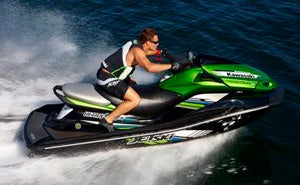
Okay, you’ve been patient. Go ahead and open up the throttle, but be realistic about the type of rider you are. If you’re a performance junkie, make sure it’s got the punch out of the hole you demand and that you can control the acceleration with trim or body position to avoid porpoising off the line. Not so into speed? Make sure it doesn’t overwhelm you. A powerful craft can be a handful and dangerous in the hands of someone who can’t — or doesn’t want to — handle the speed.
Likewise, check out a prolonged top-speed run. Make sure the craft is stable, predictable, and has the power you expect. Again, be realistic. A hot-rod cruiser may be fun, but perhaps not the best match for your family. Likewise, a tamer craft may be more family-oriented, but make sure its primary rider won’t get bored with time.
Turn…and Learn
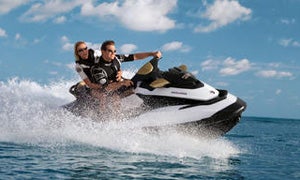
Now start cranking some turns at a variety of speeds. Does the craft aggressively hook up and power through the turns, or does it feel looser, sweeping a more gentle route? A buoy of some kind makes a good frame of reference. Use it as a marker, and note how the craft responds in relation to this fixed point. But most importantly, see how you respond. Note if the turns feel natural, and if you can keep control of the craft with your legs and arms. Don’t rush to a judgement. If the craft doesn’t respond the way you like, try a different stance, shift your weight more towards the bow or stern, or lean into the turns more or less than you had been. A simple shift in body weight can significantly change how the hull responds.
If the boat has trim, experiment with it. Dropping the bow before you enter a turn will often totally change the way a craft handles, putting more hull in the water. You may also prefer to simply leave the trim in that position if you’re cranking through some corners, then raise it when you head off for a straight-line run.
In short, experiment.
Change Up the Conditions
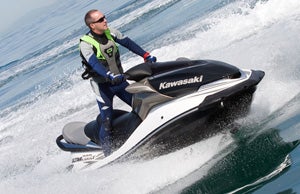
Chances are you’ll ride in a variety of water conditions, but they may be difficult to duplicate on your test ride. If you need to create some waves, carve a few S turns to chop up the water, then turn around and pass back though them from a variety of angles. Does the craft slice its way through the waves, skip over them, or seemingly drop into each and every one? In turn, note how jarring the impact feels to you onboard. Some craft are surprisingly soft, while others can rattle your teeth. Think about where you’ll ride most often, and make sure the craft is a good match for the conditions.
Don’t Forget the Features
Make no mistake; the ride is what’s most important in the long term. But today’s craft have plenty of features, and you’ll want to check them out in a real-world application. Start with reverse. Test out how easy it is to use, if you can control both reverse and throttle at the same time, and how well the craft responds to your input at the handlebars. Try things out in open water, then move into a tighter space like the dock or launch ramp.
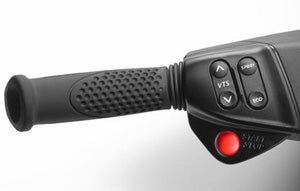
In open water, try out cruise control if available. Lock in a speed, and then see how easy it is to adjust on the fly. Take the time to check out other features as well, such as the braking on a Sea-Doo, or how well the off-throttle steering response pushes the craft away from a pretend obstacle.
Back on shore, poke around for a few more minutes before turning the craft back over to the dealer or rep. Better yet, ask some questions. Have them show you the stowage, and note how large it is or how convenient it is to access. Again, keep in mind what type of rider you are. If you’re into touring, you’ll need space to bring along stuff for the ride. If you’re more into performance, you may be willing to sacrifice some of that space as you may not be bringing much along.
Also consider how easily the craft will be to maintain. Look for the availability of flush fittings, where the battery is located (you’ll need to keep it charged), how to check your oil level, etc.
Don’t Stop After the Test Ride
That’s probably all the time you’ll have in a test ride, but don’t let your experience end there. Ask around, do some research online, maybe even write some notes to keep things fresh in your mind. Hopefully that test ride will either help convince you that this is the craft for you or urge you to keep looking.
Either way, it’s time well spent…as long as you spend it wisely.
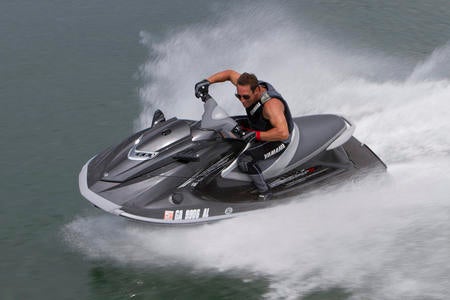
Related Reading
Five Steps to Finding the Perfect PWC
Yamaha Offering WaveRunner Demos All Season
How To Find Good Service For Your PWC
Five Tips for Becoming a Safer, More Responsible PWC Rider
Get PersonalWatercraft.com in your Inbox!
Like PersonalWatercraft.com on Facebook
Comments
Most Popular

2025 Yamaha JetBlaster PRO 2-Up Review

2024 Kawasaki Jet Ski STX 160X Review

Remembering the Sea-Doo XP

Whatever Happened to the Wetbike?

2025 Yamaha JetBlaster Review




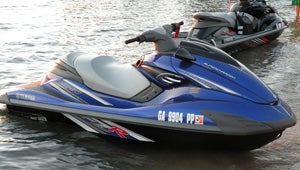

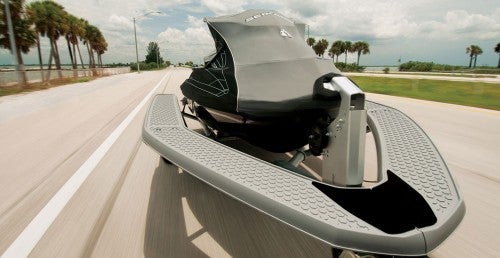






 Your Privacy Choices
Your Privacy Choices